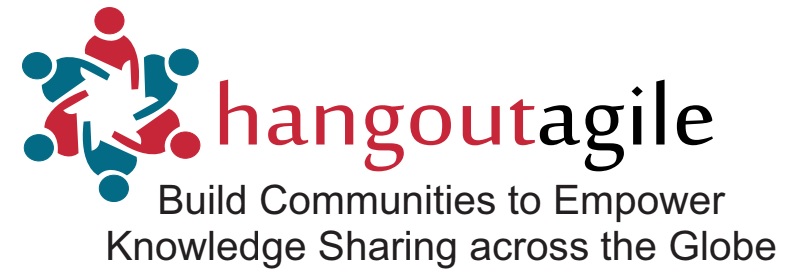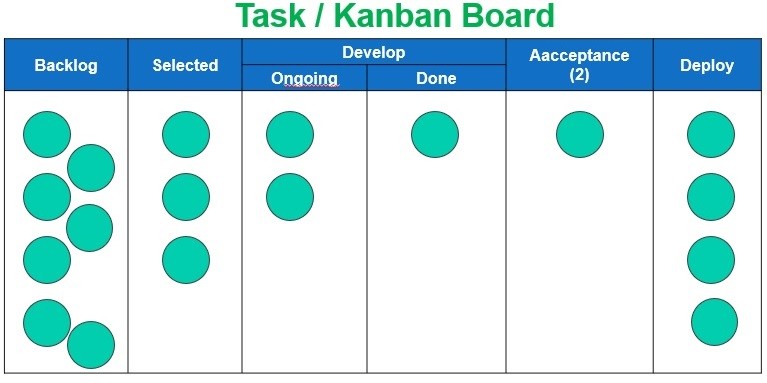Agile Kanban Software Development:
Kanban Development is derived from the Lean Production System used at Toyota. “Kanban” is a Japanese word meaning “signboard”. or Kanban task board as it is also called, plays an important role in the development methodology.
David Anderson created the official “Kanban Method”. He took the Theory of Constraints and applied it to the Flow of Software Development. This method is simple and is a super useful Getting-Things-Done (GTD) technique. I’ve heard of weddings and house moves planned with Kanban Task Boards. I’ve even used one myself for New Year meal planning. The method is easy to get started and immediately practical.
The Kanban Development Method limits work in progress (WIP) to help identify issues and minimize the waste and cost associated with changes during development. It uses a Pull System to take work, within the WIP limits, through the stages of development.
In the Kanban Task Board displayed on top of this article, We can see the Projects Backlog in the first column, the second column indicates that there are three user stories currently selected for development. The project has a WIP limit of four selected user stories. The WIP Limit is the maximum number of items that may be in that column, or state of progress. If the limit is reached, no new items maybe moved into the column until other items are moved out. The Develop & Acceptance columns also have WIP Limits; in this case, they are three and two, respectively.
Agile Kanban Development operates on 5 Core Principles:
Visualize the Workflow: Knowledge worker projects, by definition, manipulate knowledge, which is intangible & invisible. Therefore, having some way to Visualize the Workflow is very important for organizing, optimizing and tracking it.
Limit WIP: Keeping the work in progress low increase the visibility of issues and bottlenecks and in turn facilitates continuous improvement. It creates a Pull System of work through the development effort, reduces cost associated with changes, changes and minimizes sunk cost.
Manage Flow: By tracking the flow of work through a system, issues can be identified and changes can be measured for effectiveness.
Make Process Policies Explicit: It is important to clearly explain how things work so them team can have open discussions about improvements in an objective, rather than an emotional or subjective way.
Improve Collaboratively: Through scientific measurement and experimentation, the team should collectively own and improve the processes it uses.
The Agile Kanban Development method has helped Popularize Task Boards with WIP Limits and Pull Systems created by limiting WIP. It also gives permission and encourages team members to try new approaches and change processes. With a Continuous Pull Model, Iterations may not be required, and activities like creating estimates can be considered and waste and reduced or eliminated entirely.
If you’re new to Agile & Lean or Passionate to know many more info or Interested to learn about it, Please read my other listed articles on https://hangoutagile.com/blog/
If you look forward to up-skill & Certify yourself on Agile/Lean by learning through simulation & other tools/techniques, that too with the globally accepted Credentials /Badge, Please feel free to reach to nadia@diaame.com or dileepav@diaame.com
Success in Management
Requires Learning as Fast
as the world is changing.
HAPPY LEARNING !!! 🙂 !!!


